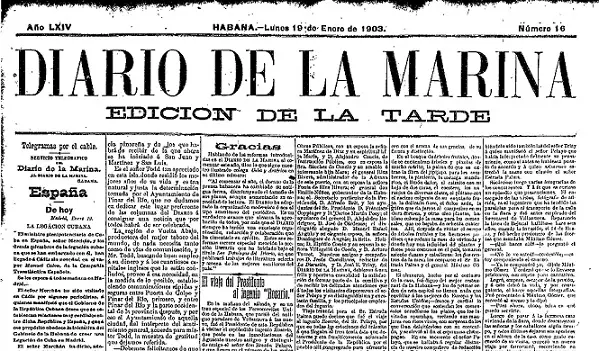MADRID, Spain.- The Navy Journal, “Dean of the Cuban press”, as he defined himself on the front page, was born in 1844 from the union of two newspapers that had already been in existence for more than a decade: havana star and the newscast. Hence, some authors assign the foundation date of one of its predecessors and others that of April 1 of the year in which they merge.
Guillermo Jiménez, for example, in his work The companies of Cuba 1958, notes: “It began to be published on September 16, 1832 as the newscast and havana stardirected by Isidoro Araujo de Lira, after merging the Havana newspaper the newscastowned by Manuel Francisco Salinero, with The star, originally founded in Matanzas and transferred the year before to Havana by José Perera. In 1844, it adopted the new name by granting it the privilege of being the official body of the Navy Station”.
Gregorio Ortega points out: “The first issue of Navy Journal It appeared on April 1, 1844 as the official organ of the Higher Authority of the Navy on the Island”. Other authors limit themselves to recording that the change occurred in 1844, without specifying the month.
But there is a consensus that the morning newspaper located on Prado street in the capital was one of the most important and influential in insular society; that would surpass the other newspapers in classifieds.
With the US intervention on the island in 1899, the Diary suppressed the subtitle of Official Organ of the Havana Station. It was directed by Nicolás Rivero Muñiz from 1895 to 1919, when his son José Ignacio (Pepín) succeeded him, until his death in 1944. Then it had a Board of representatives of economic sectors, chaired by Silvia Hernández, Rivero’s widow, with her children José Ignacio, Nicolás, Alberto, Silvia and Oscar. In 1945 an Executive Committee was created, made up of, among others, the educator and historian Ramiro Guerra, and Eliseo Guzmán, later director and co-owner.
It had among its columnists renowned intellectuals such as Gaston Baquero, Jorge Mañach and José M. Chacón y Calvo. Its editorial pages united the Catholic and anti-communist profile, the literary presence of Mañach, Jose Lezama Limaby professors and writers Medardo Vitier and Graziella Pogolotti, and others.
Navy Journal It came out for the last time on May 12, 1960, the date it was closed by the government of Fidel Castro.














